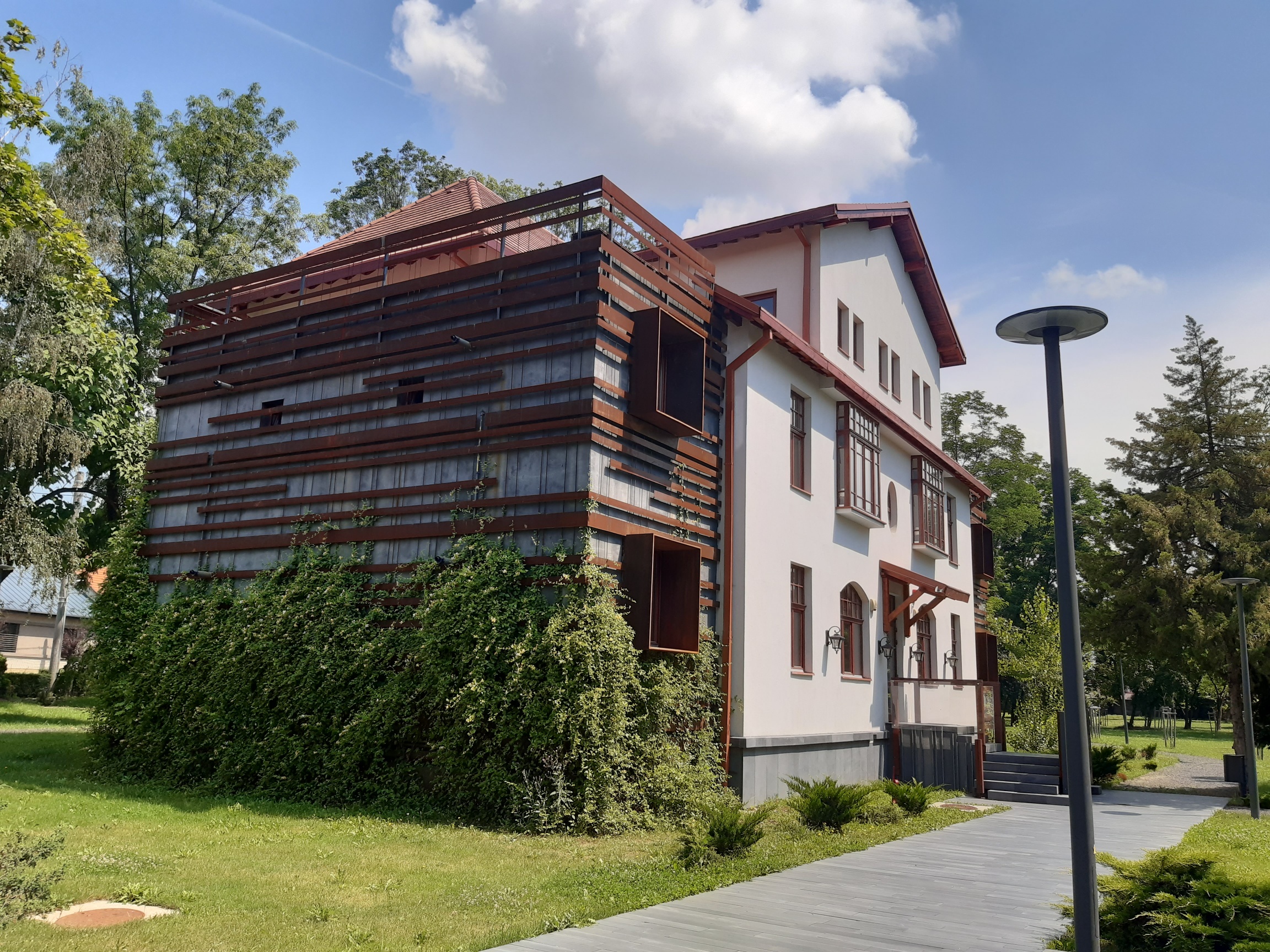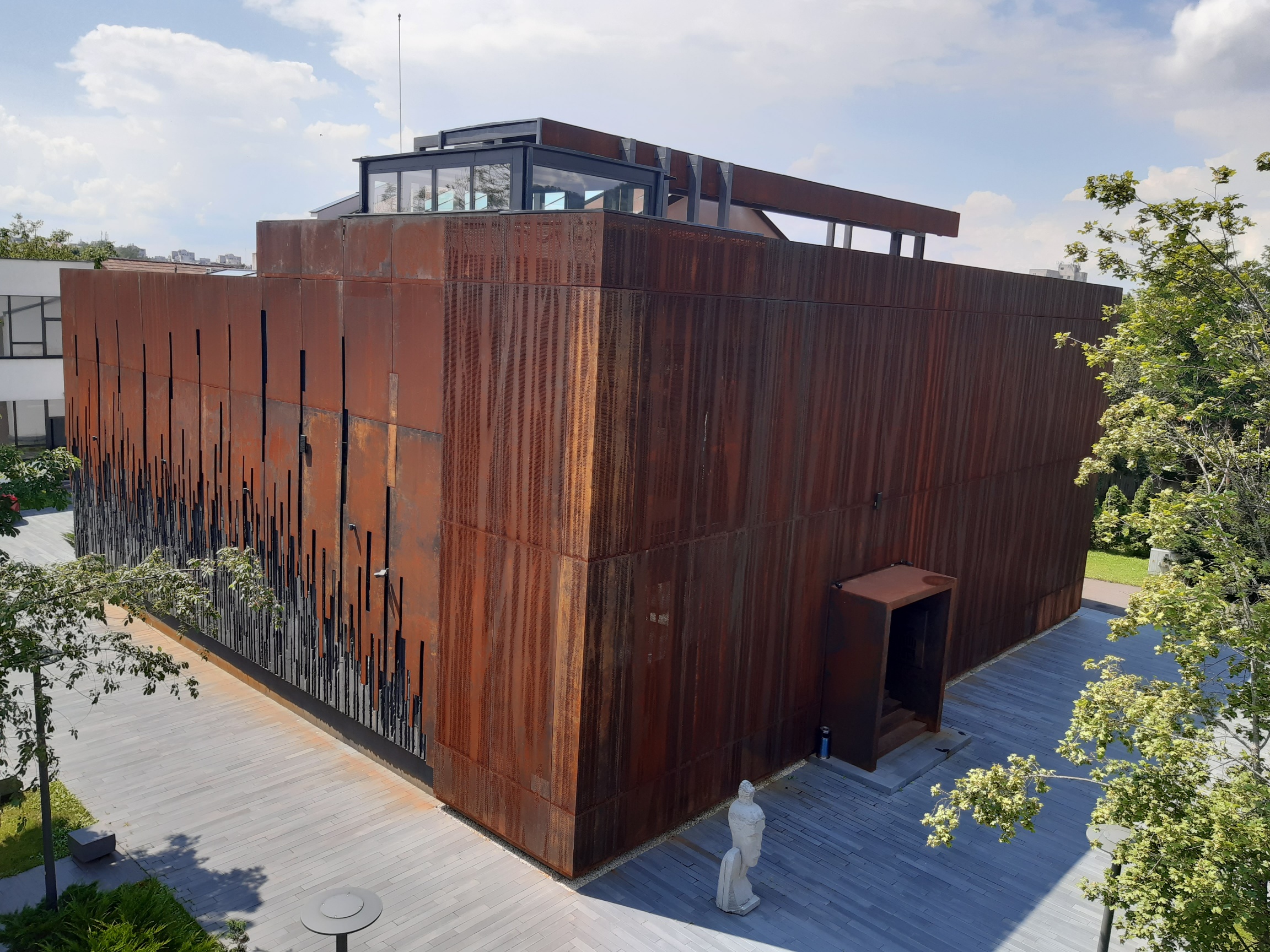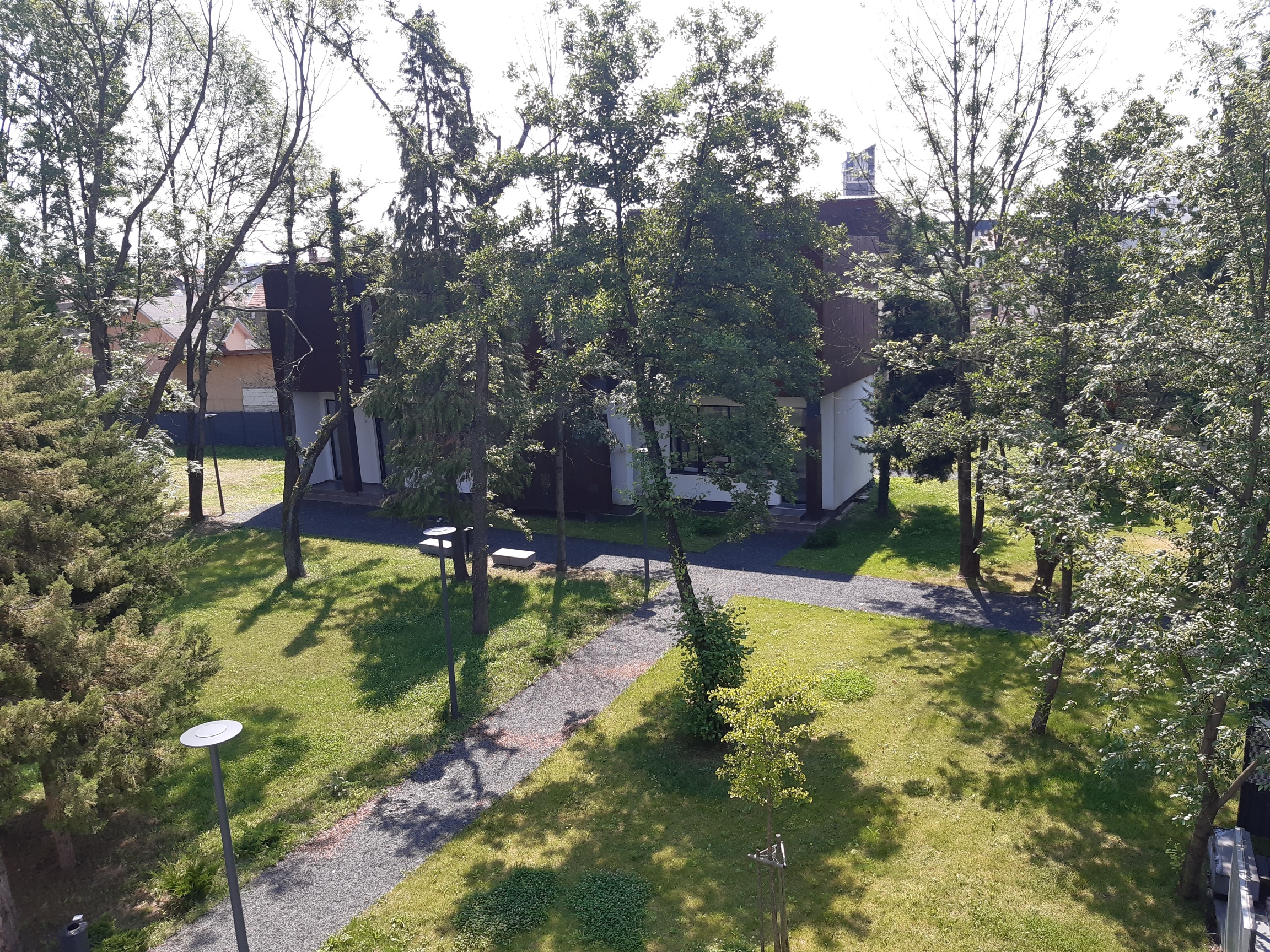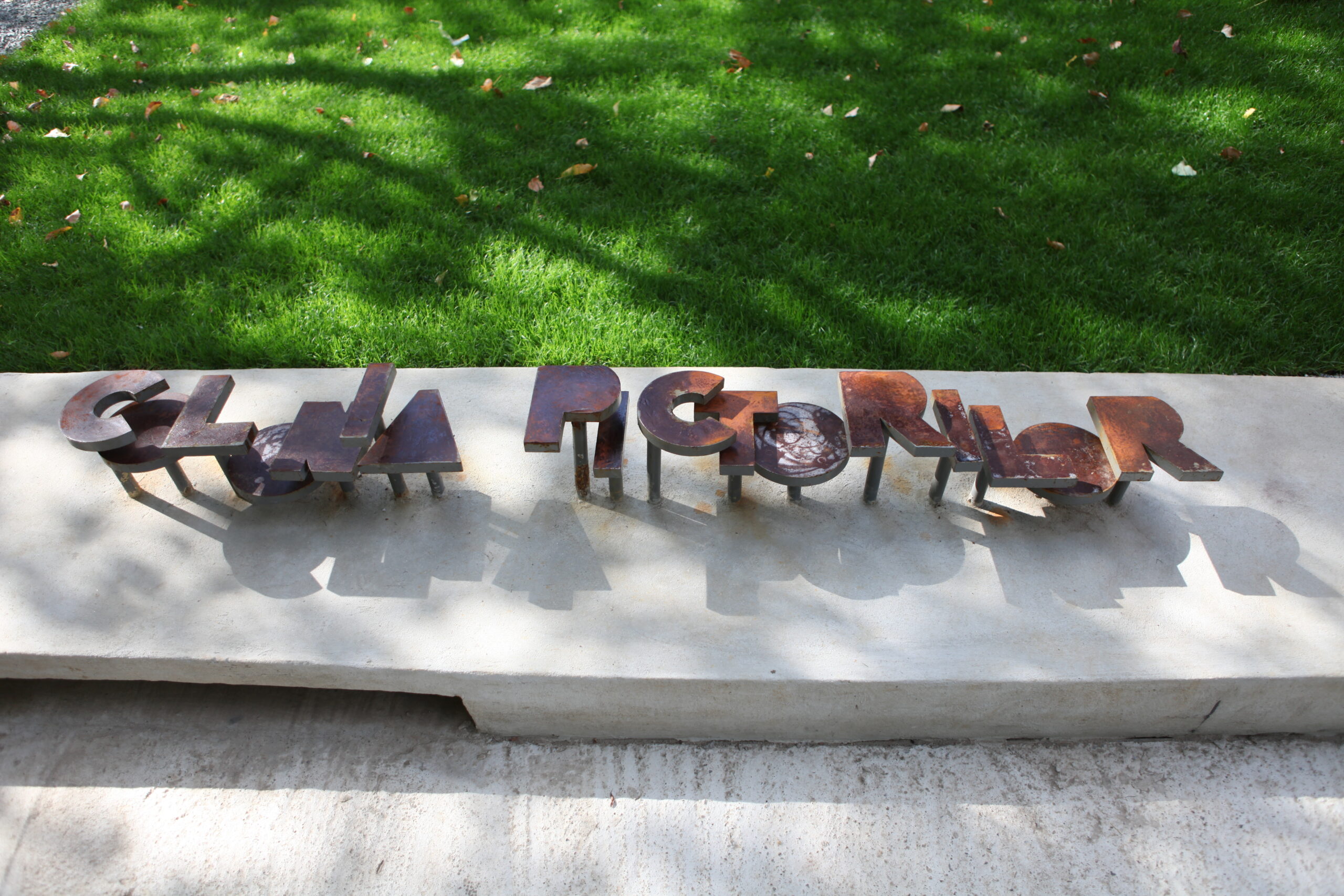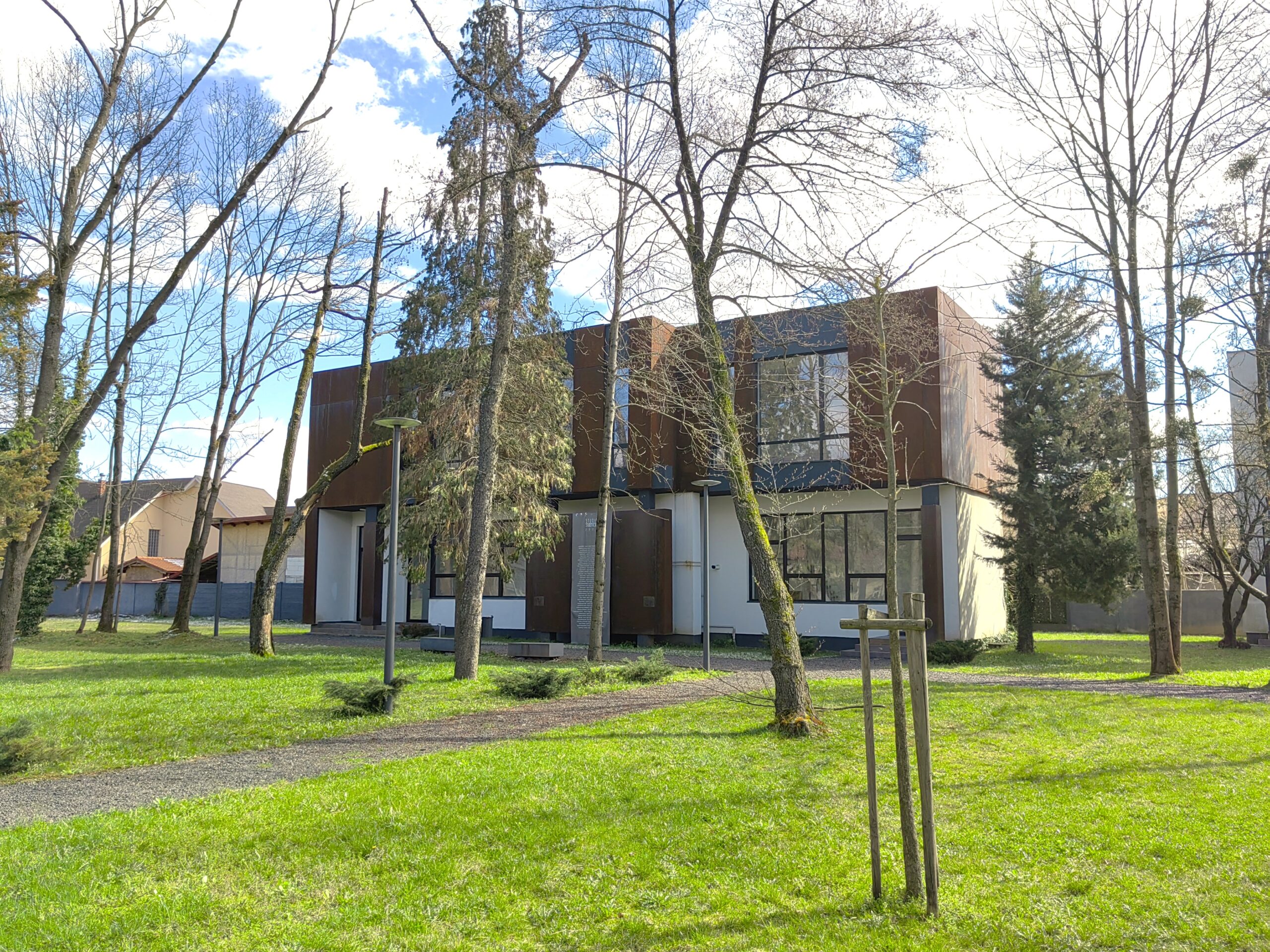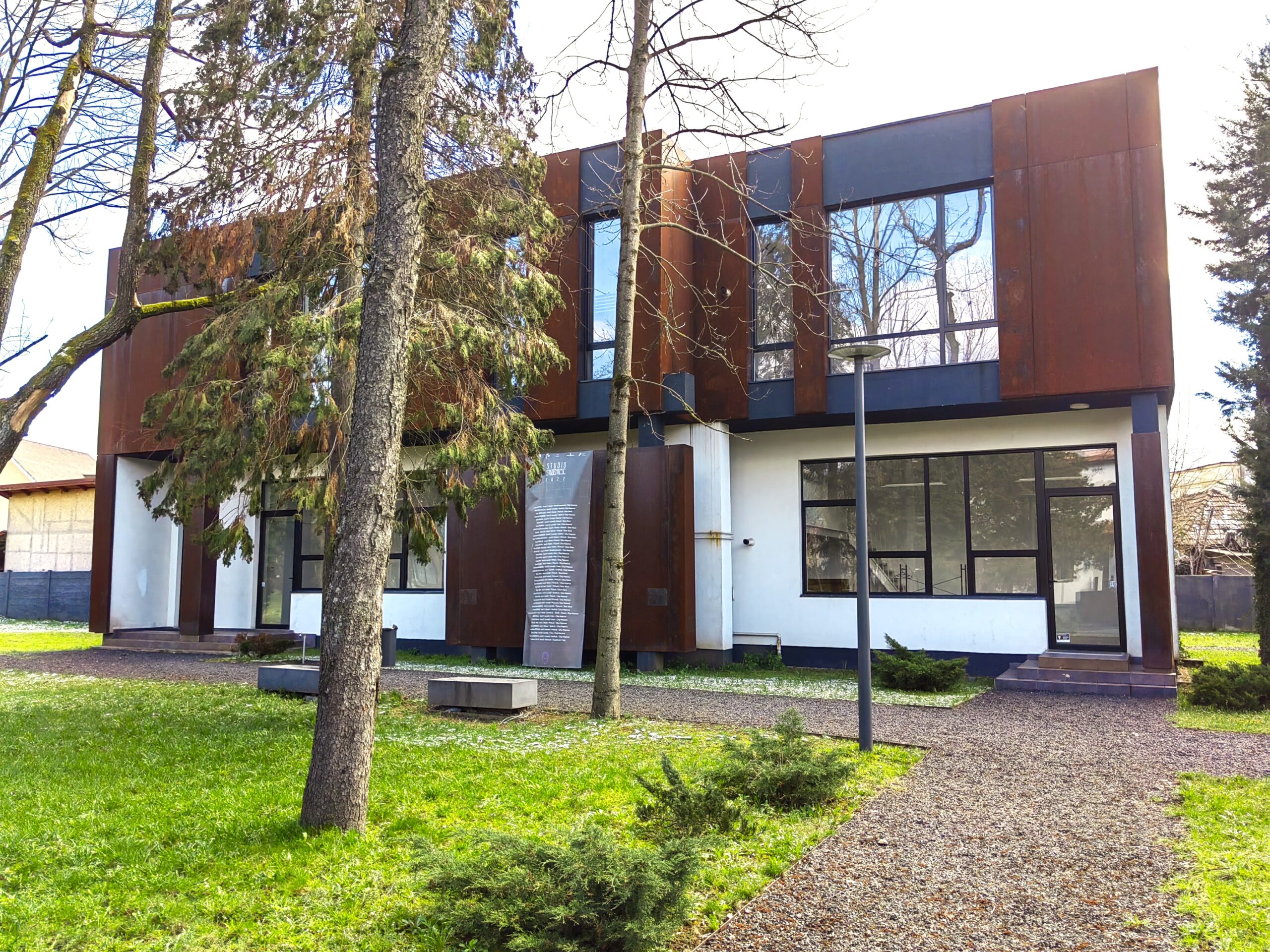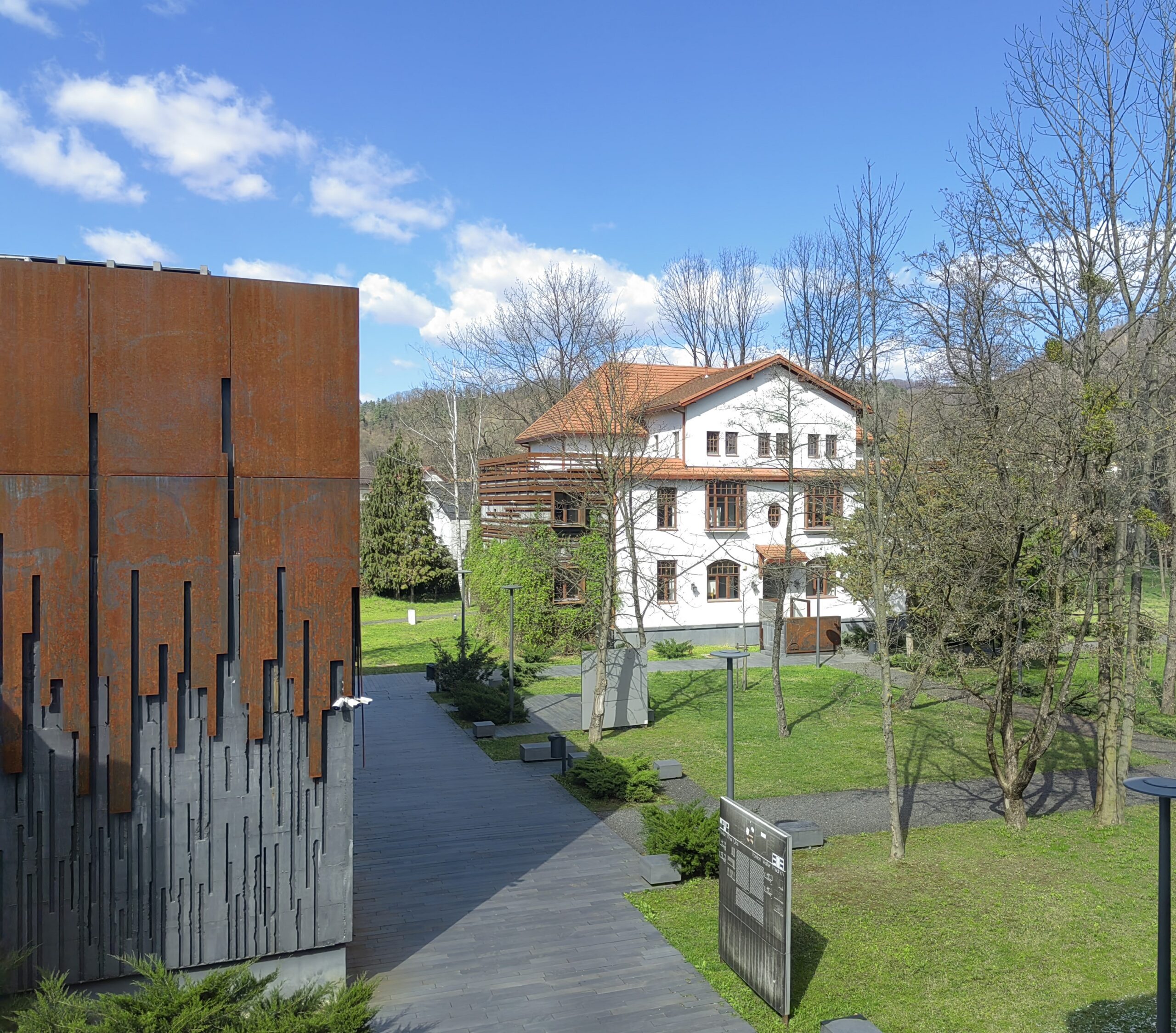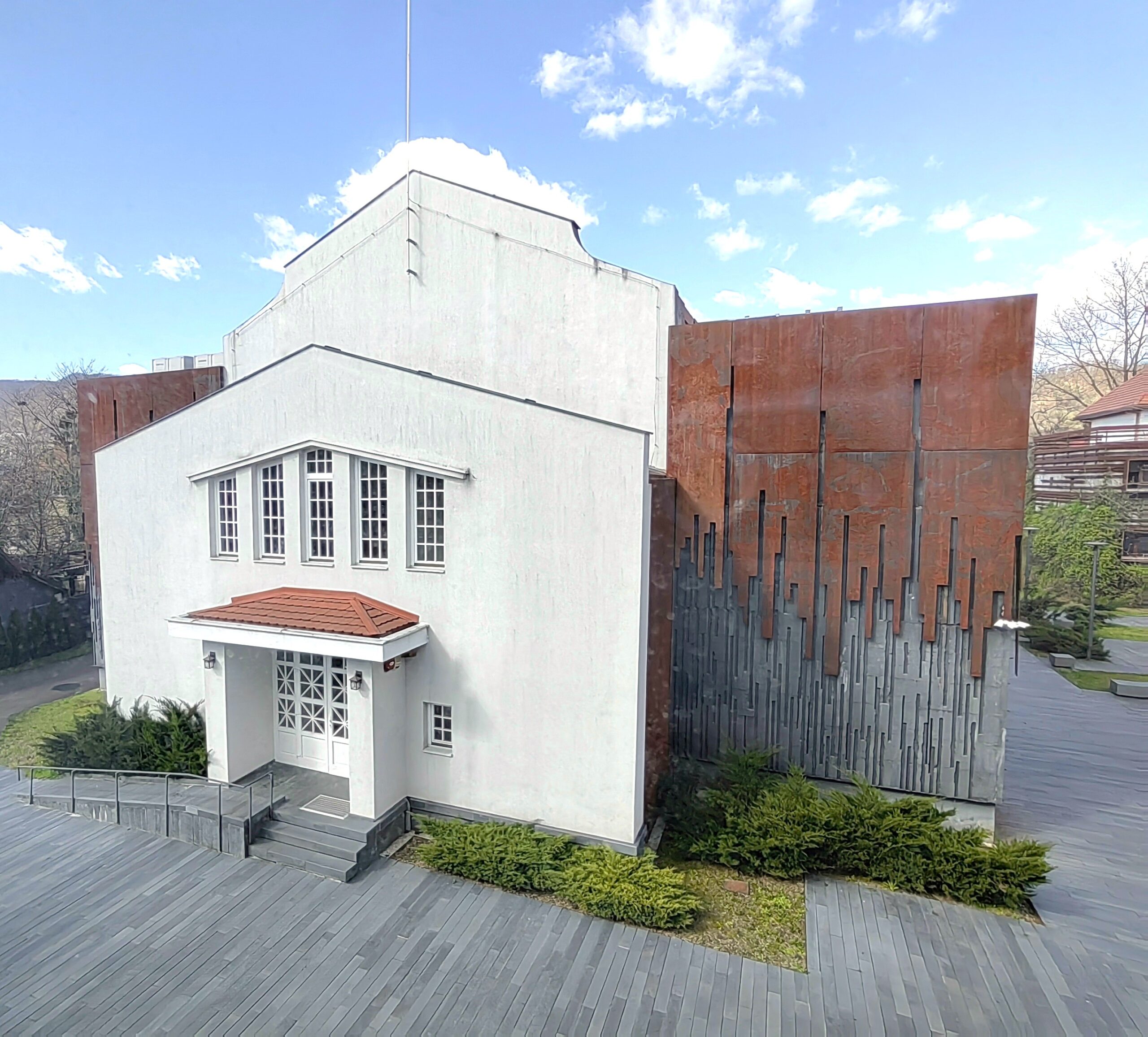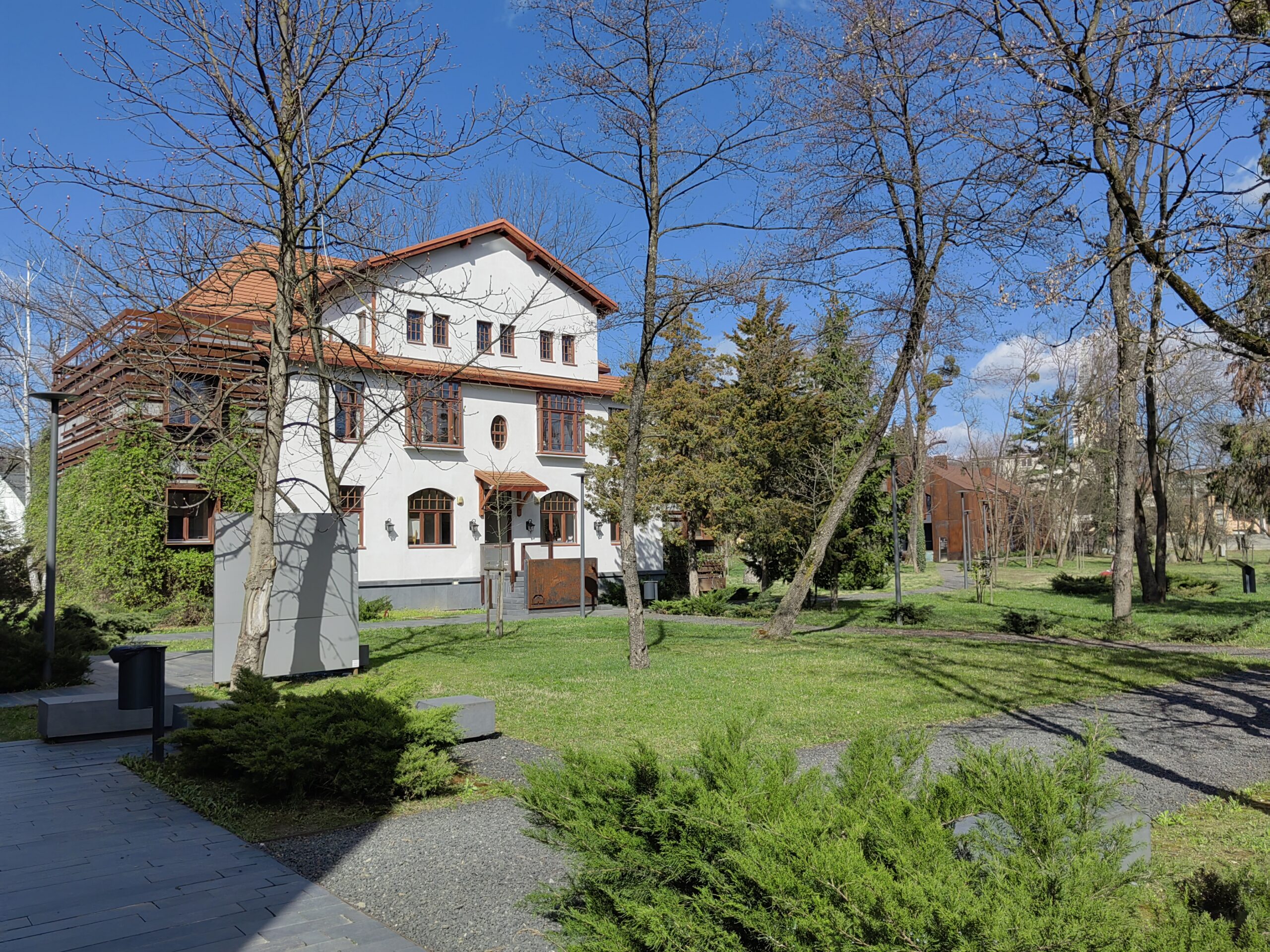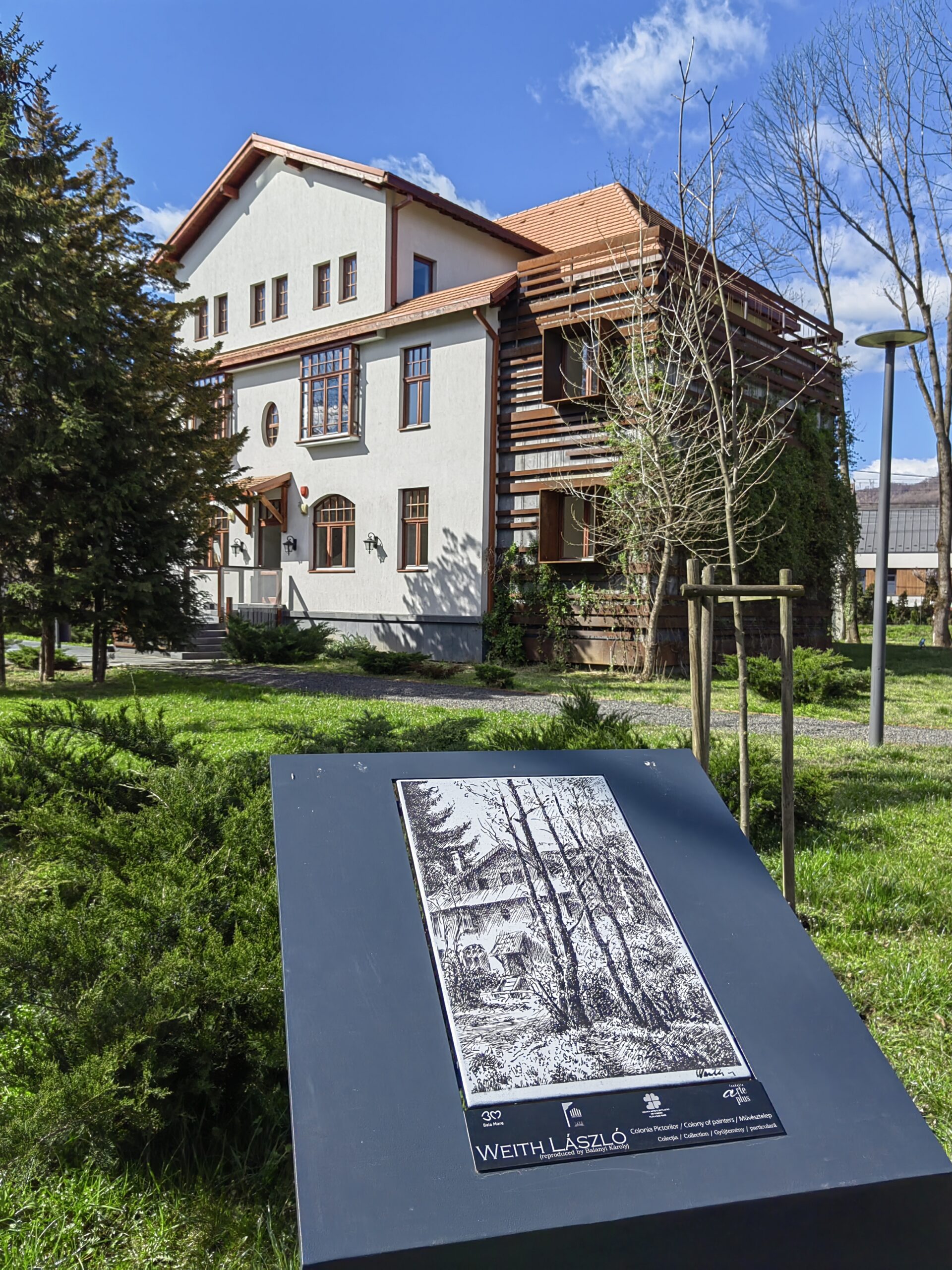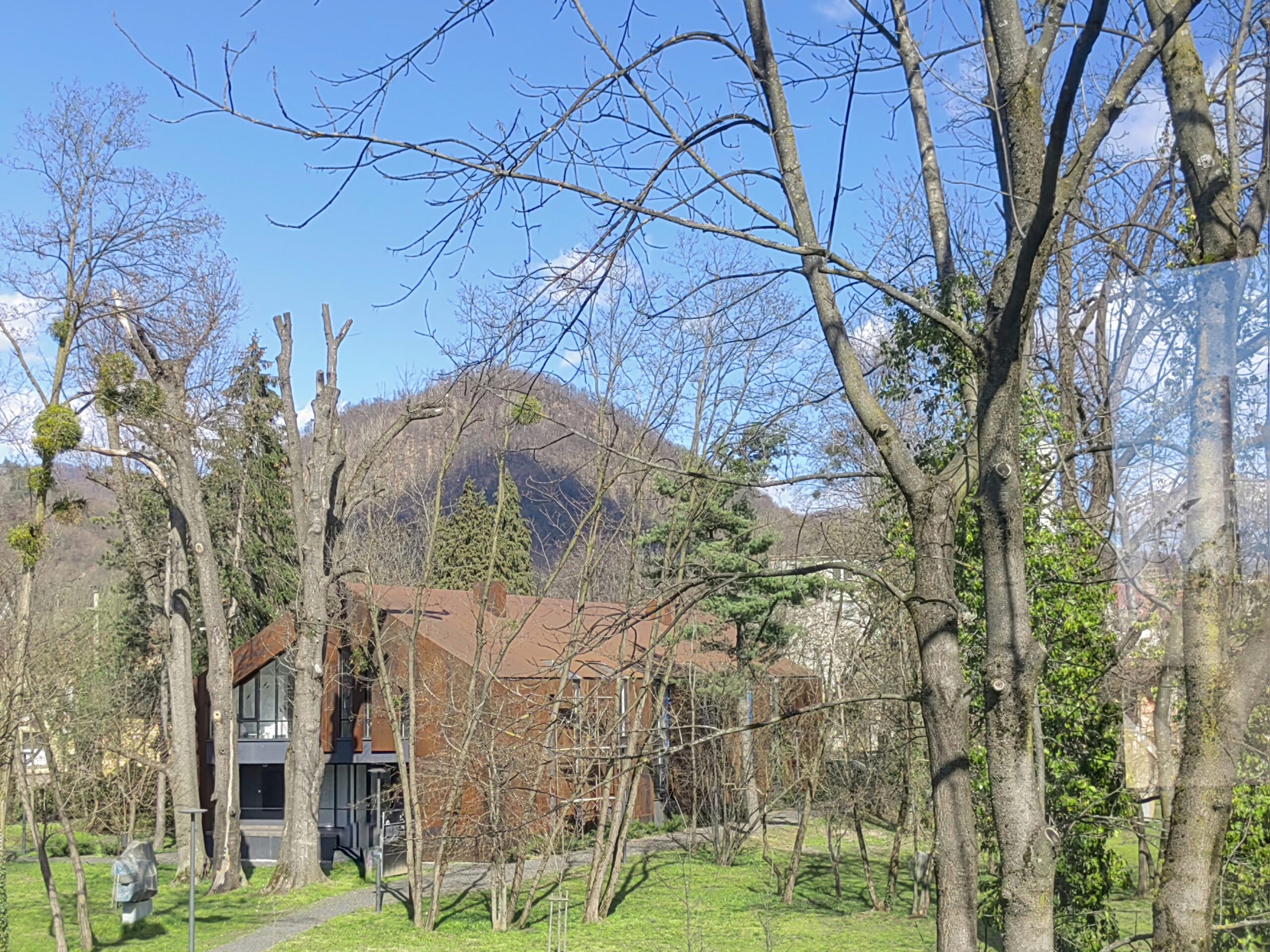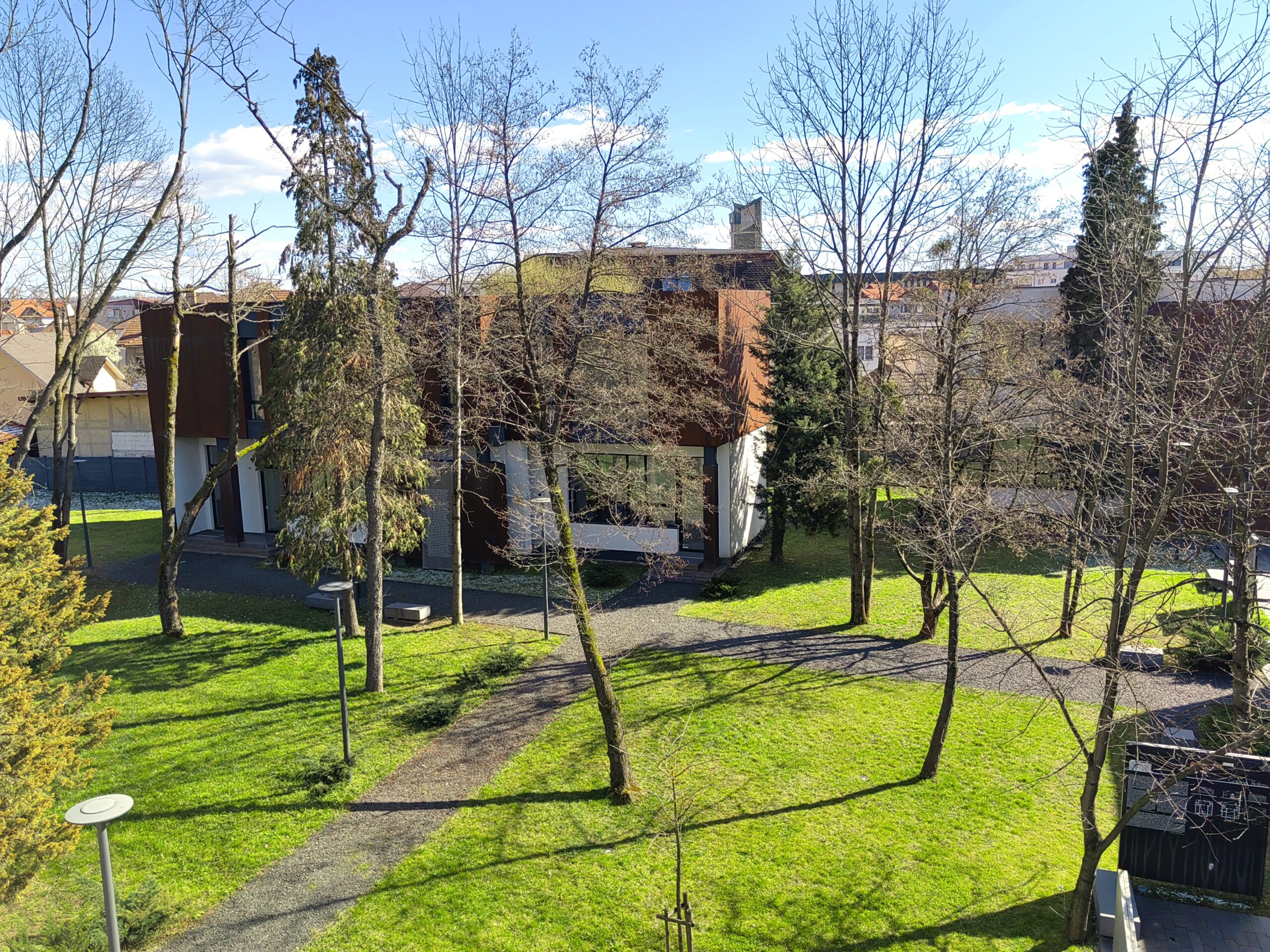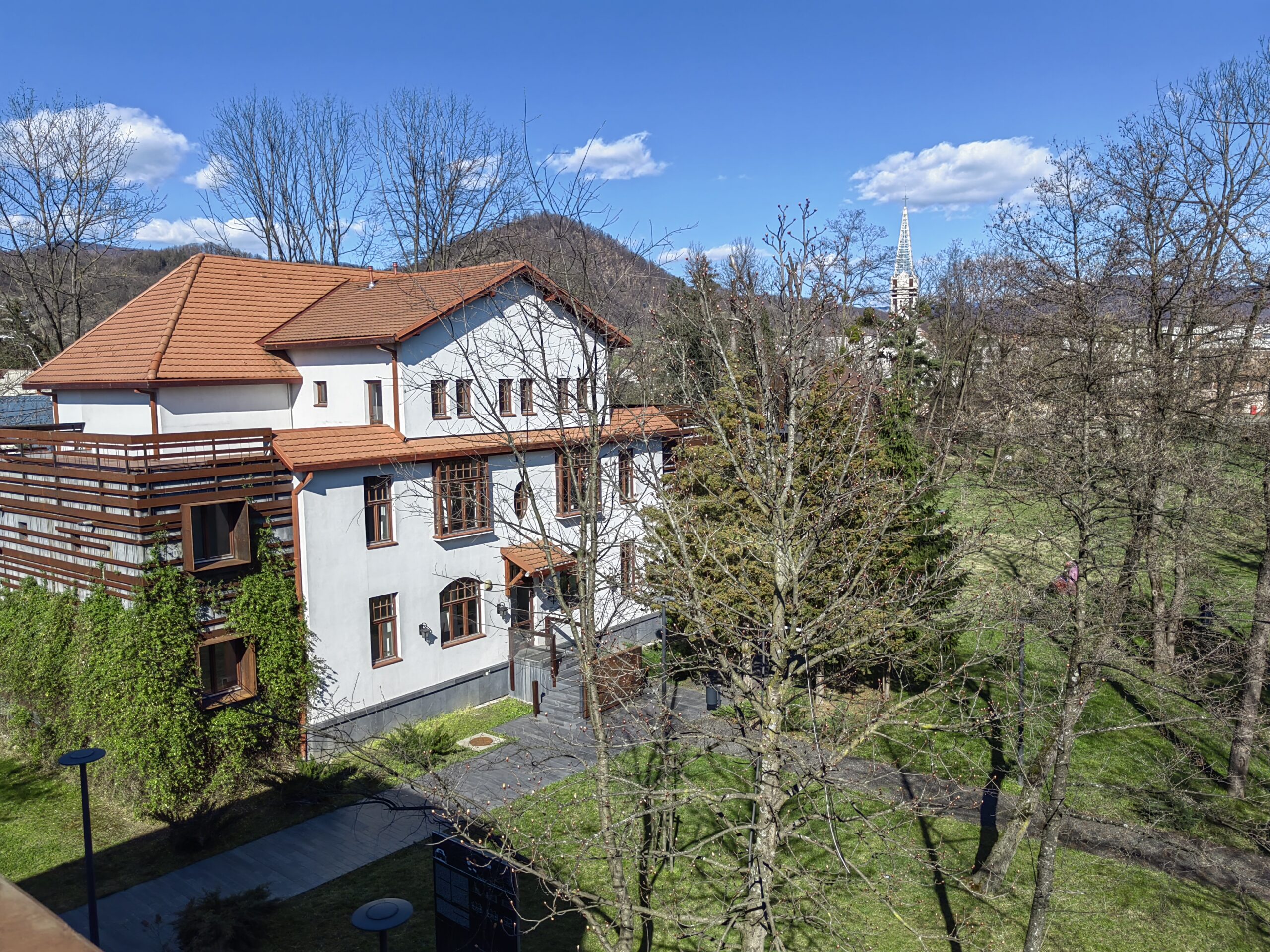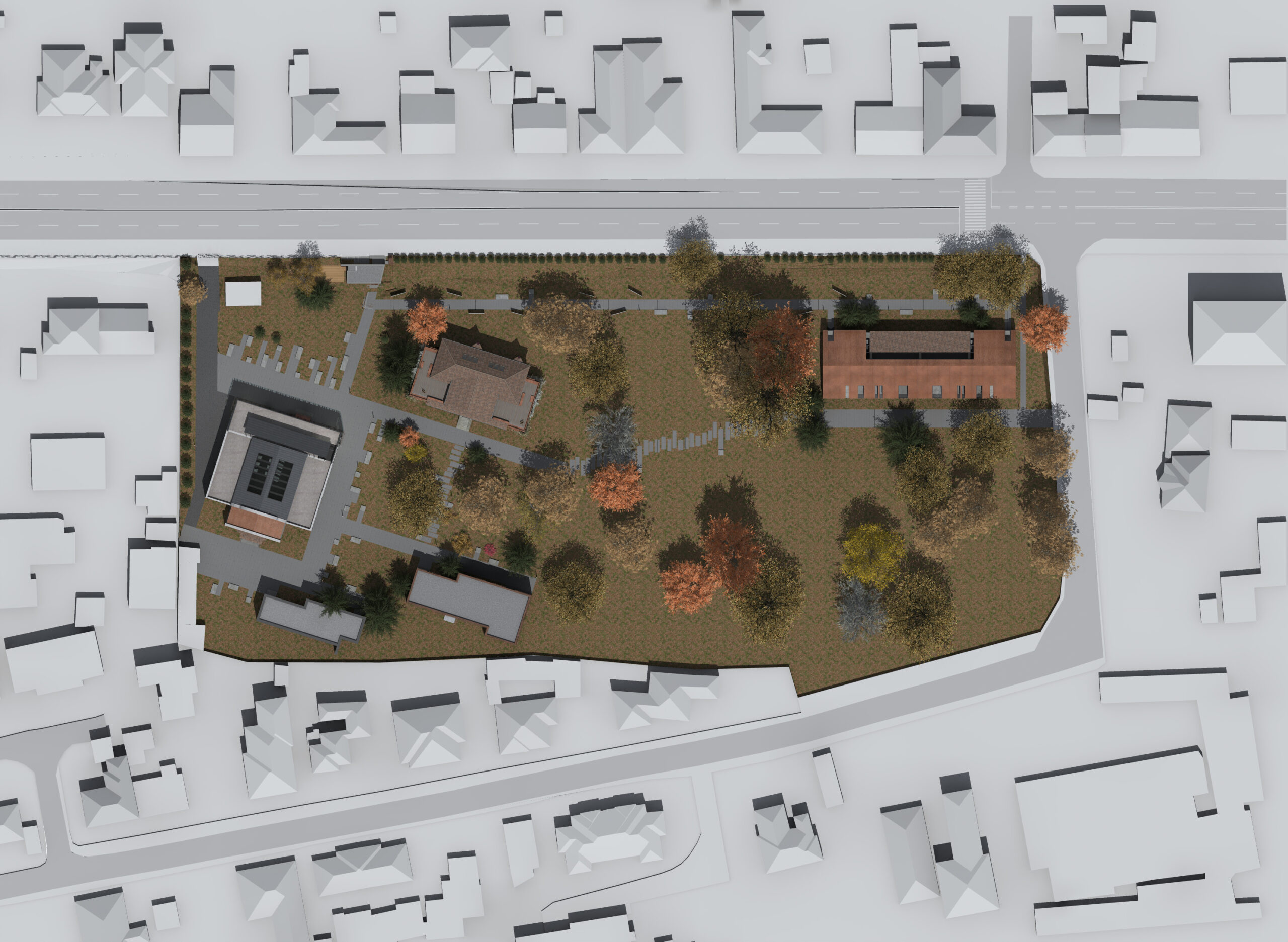Painters' Colony, Baia Mare.
Address: 21 Victoriei Street, Baia Mare 430142, Maramureş county, Romania
Phone +40362803225,
Email: coloniapictorilor@yahoo.com
„Colonia Pictorilor”(“Painters’ Colony”) is located on a plot of land with an area of 13,417 sqm, the settlement consisting of creative spaces, organized in 5 buildings, constructed in 1900 – 1911 – 1920 – 1968, as well as a contemporary building designed and built in 2012, called Documentation and Visual Communication Point. It has been included in the List of historical monuments since 2010 at position 194, registered with the code MM-II-a-A-04494.
This artistic establishment was founded in 1898, at the initiative of the painter and pedagogue from Maramureş, Simon Hollόsy (1857-1918), by the Decision of Baia Mare City Hall of March 27th, 1898, “for the establishment of a permanent painting colony in Baia Mare.” Then, the municipality, represented by Mayor Oliver Thurmann, decided to build 8 workshops, one for each of the signatories of the letter addressed to Baia Mare City Council: Hollόsy Simon, Károly Ferenczy, Béla Iványi Grünwald, János Thorma, István Réti, Oszkár Glatz, Csók István, Horthy Béla. The approach was not completed immediately, in the urban evolution there were several stages, each of them materializing through certain constructions composing today the patrimony of what is called the Baia Mare Painters’ Colony.
Thus, in 1900 the building housing 2 workshops was completed, on a swampy land, on the bank of the Săsar River, property of the city, the area not being systematized at that time. The workshops were rented by the City Council to István Réti and Béla Grünwald. In 1910 and 1911, in the same area, the municipality erected 2 new buildings, based on the projects of Hungarian architects Balint and Jambor. The 2 buildings (a Painting School and a workshops building) were completed in the spring of 1911. The school building consisted of an exhibition hall, illuminated from the top by a glass roof (8×14 m) and 2 workshops. The other building, composed of ground floor and first floor, included 4 workshops, one room each and outbuildings. In the same year, the existence of the Baia Mare School and Colony was formalized from a legal point of view, by establishing the Society of Painters from Baia Mare.
Another stage in the evolution of the municipal dowry of the colony took place after 1968, when 2 new buildings were designed and built (GF and GF + 1), with 6 creative workshops for the Art Galleries of the Baia Mare Fine Arts Fund.
For a century, over 3000 plastic artists from England, Austria, Czech Republic, Croatia, Switzerland, France, Germany, India, Italy, Norway, Holland, Poland, Romania, Russia, USA, Slovakia, Spain, Sweden, Ukraine, Hungary, Yugoslavia have worked here temporarily or permanently. In a chronology proposed by Dr. Tiberiu Alexa (1993), director of the Baia Mare County Museum of Art, the Baia Mare Art Center went through three distinct stages: the affirmation phase (1896-1918), the development phase (1919-1950) and the diversification phase (1951-present), marking the emergence of new institutional forms, but also the presence of historical acts and facts that took place in this field of fine arts. Thus, specialized bodies have covered, over time, all specific areas of artistic life: education, art production itself, public circulation and consumption, purchasing and collecting practices, but also scientific research and capitalization of the historicized artistic heritage. (Dr. Tiberiu Alexa)
Through the rehabilitation project, carried out between 2015-2017, the Painters’ Colony Center for Contemporary Art proposes today a multifunctionality of the spaces, in order to host courses and creative activities, conferences, current large-scale cultural activities. Some of 28 artist residencies are part of an exchange project in which the space of the Painters’ Colony will become more dynamic and regain its European dimension. By vertically systematizing the outdoor space, very generous and with vegetation preserved very well for the central area of the city, the contrast between the 6 buildings from the premises and the natural element with the appearance of a park is highlighted. The function of an art gallery is optimized, an imperative space for an artistic center with such a history.
This cultural site represents the community, which identifies and participates in defining it. In other words, the Painters’ Colony Center for Contemporary Art becomes a powerful device through which the artistic guild of Baia Mare manufactures and reveals its own identity. This space thus conceived and created is, on the one hand, a mirror of the artistic guild, a place of hospitality, an interface, allowing tourists to discover this local specificity with an international character. Through everything it is, this place will communicate about its uniqueness.
The financing of this project was provided entirely from the local budget of Baia Mare Municipality, amounting to approximately 3,200,000 Eur. The Baia Mare municipality recovered the investment made from the local budget, thanks to the Regio financing project, “Valorization of the cultural heritage through the restoration and rehabilitation of the Painters’ Colony” through the contribution of the European Union through the financing contract no. 3466 / 11.12.2018.

